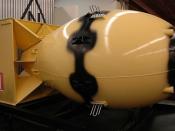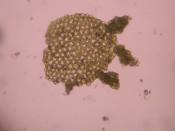All animals survive and respond to the environment in seven different ways. Animals carry out the following essential functions: feeding, respiration, circulation, excretion, response, movement, and reproduction.
Feeding: Animals have evolved a variety of ways to feed. Herbivores are animals that eat plants, including roots, stems, leaves, flowers, and fruits. Carnivores consume other animals. Filter feeders are aquatic animals that strain tiny floating plants and animals from the water around them. Detritivores are animals that feed on pieces of decaying plant and animal material called detritus.
Respiration: Whether animals live in water or on land, all animals breath, which means that they take in oxygen and release carbon dioxide. Because of their very simple, thin-walled bodies, some animals can rely on the diffusion of these substances through their skin. Most other animals, however, have evolved complex tissues and organ systems for respiration.
Circulation: Many small aquatic animals, such as some aquatic worms, rely solely on diffusion to transport oxygen, nutrients, and waste products among all their cells.
Diffusion is sufficient because these animals are only a few cell layers thick. Larger animals, however, have some kind of circulatory system to move materials around within their bodies.
Excretion: A primary waste product of cellular metabolism is ammonia, a poisonous substance that contains nitrogen. A buildup of ammonia and other waste products would kill an animal. Therefore, excretion is critical to life. Most animals have an excretory system that either eliminates ammonia quickly or converts it into a less toxic substance that is removed from the body. Excretory systems vary from groups of cells that pump water out of the body to complex organs such as kidneys.
Response: Animals respond to events in their environment using specialized cells called nerve cells. In most animals, nerve cells hook up together...


